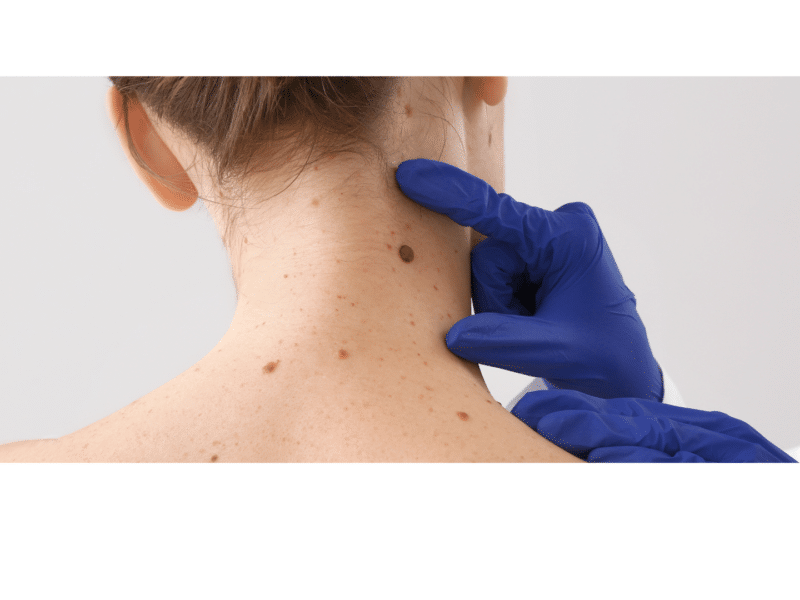Condition
Moles
Moles are common skin conditions affecting the majority of people worldwide. Appearing as growths on the skin, they can develop anywhere on the body, such as the head, fingers, or face. Over time moles can change either by getting smaller, totally disappearing, or growing in size. Generally harmless, some people may feel embarrassed or uncomfortable with them. At Cardiff Cosmetic Clinic, we offer mole removal with our innovative state-of-the-art cosmetic treatments.
What are Skin Moles?
Moles referred to as nevi in medical terms, are growths on the skin, manifesting anywhere on the body as brown, black, or flesh-colored marks. Typically appearing in childhood or early teenage years, moles can vary in size, shape, and colour. They can grow in clusters or solo. The different types of moles include congenital nevi and dysplastic nevi. Congenital nevi are moles that we are born with and are a common type of birthmark. Dysplastic nevi appear later in life and are generally uneven in shape and colour. For whatever type of mole, aesthetic treatments can safely and effectively remove them.
What causes Skin Moles?
Moles occur when the skin cells, melanocytes, grow in a cluster rather than spread out. Melanocytes contain melanin and give skin its colour. Moles commonly develop in childhood up until 25 years of age. New moles can emerge later in life when the body experiences hormonal changes like pregnancy. Additionally, excessive sun exposure can cause moles to develop or change their appearance. Usually non-cancerous, you should get your mole checked by a medical professional if it is more than 0.5 cm or if they significantly change in appearance.
How to get rid of Skin Moles?
For fast, effective mole removal, our aesthetic experts at Cardiff Cosmetic Clinic use Plexr. Plexr combines the latest innovation with cutting-edge skin aesthetics to blast away your mole for radiant, smooth skin. Plexr soft surgery uses plasma energy which heats the skin turning solid tissue into gas and instantly vaporising the moles without scarring. Plexr is a highly effective solution for treating patients with moles of all shapes and sizes; it’s direct and swift, giving you smooth, clear, and healthy-looking skin.
Related Treatments
Request a Consultation
Here at Cardiff Cosmetic Clinic, we are an aesthetic skin care clinic where our team has a care-focussed approach to your treatments! So, if you have any questions, or would like to discuss the best Cosmetic Treatment for you, request a free
consultation by simply filling in the form below; one of our team will get back to you as soon as possible.


